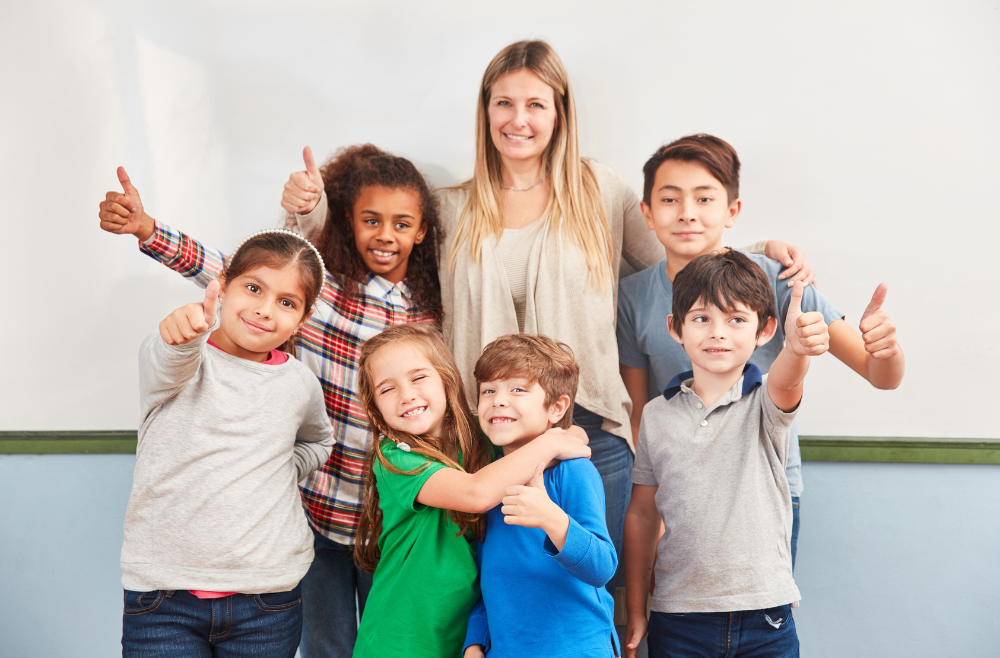Cultivating Gratitude in the Classroom
One of the most important aspects of classroom management is fostering a positive learning environment. Creating an appreciation culture can be challenging, but it is an essential precursor to student learning and success. Cultivating gratitude in the classroom is a simple and effective way to improve classroom culture so your students will be ready to learn. Learn why it works and how students and teachers can harness the power of gratitude.
The Power of Gratitude in the Classroom
Who Benefits from Gratitude in the Classroom?
When students and teachers practice gratitude in the classroom, the results can be transformative. Gratitude is a powerful tool that encourages collaboration, mindfulness, and respect. When the classroom is a positive environment, learning can increase exponentially.
The Impact on Students
Do your students currently express gratitude? Unless specifically taught, many children will spend more time thinking about negative experiences than positive ones. They will notice that their friend received a reward they didn’t, but forget about the praise they received that morning. In psychology, this mental tendency is called the negativity bias—and it starts when we’re young!
When students are encouraged to express gratitude to one another, amazing things can happen to your classroom culture. Children will feel appreciated and respected, and they will respect their peers more as well. They will also foster a habit of positivity, and their negativity bias will turn into a positivity bias. They’ll more readily see reasons to be grateful everywhere. When gratitude is a part of your classroom, you can watch firsthand as your students grow personally and academically, as your class is a safe space where they can engage and learn.
The Benefits for Teachers
Children aren’t the only ones who benefit from an attitude of gratitude. When teachers exhibit appreciation traits, they experience greater job satisfaction and reduced stress. They are less likely to experience burnout and feel better equipped to tackle challenging situations.
When teachers feel empowered to handle the challenges of teaching, they can bring the best versions of themselves to the classroom. In doing so, they can better model the behaviors they want their students to exhibit. They can manage their students’ behavior better and communicate more effectively.
What Happens When We Cultivate a Positive Classroom?
Creating a positive classroom environment is a collaborative effort, with teachers leading the charge. When both students and teachers express gratitude to one another, they build a bridge of connection and collaboration. An appreciation-filled classroom will buzz with a culture of respect, kindness, and support—the perfect learning environment.
How Can Teachers Incorporate Gratitude into Their Classroom Routines?
There are many simple yet effective ways to practice gratitude in the classroom. Try these suggestions, and see which ones make the most significant difference in your classroom culture!
Keep Gratitude Journals. What if we told you your students could practice writing skills and cultivate gratitude simultaneously? When they journal about gratitude, they can do both! Depending on your class schedule, you can have them write a more extended journal entry about a person or event they’re thankful for or simply encourage them to jot down a quick list at the beginning of each day.
Write Thank-You Notes. Encourage your students to write thank-you notes to peers and teachers. The note writers will get a boost of positivity, and the recipients will feel appreciated. This practice will strengthen interpersonal relationships, create positivity, and encourage gratitude.
Incorporate Gratitude into Class Discussions. If your class is reading a book or studying a historical event, discuss gratitude as it relates to their learning. For example, if students are learning about a difficult historical moment, have them consider what those times remind them to be thankful for. If they read about a character struggling with something, your students can consider the challenges they face in their own lives. Who offers them help when they need it? What resources do they have access to? These are all things they can be grateful for.
Encourage Manners. Finally, encourage your students to use good manners in class. Saying “please” and “thank you” can go a long way toward fostering positive attitudes and goodwill among classmates. If someone is courteous or helpful, show your students how to express their thankfulness. The more everyone practices mindful manners, the more smoothly your classroom interactions will go.
Supercharge Your Positive Classroom with Tools for Success
Now that your classroom has implemented gratitude practices, your students are supercharged for success and ready to ramp up learning. But what if you want to take it a step further?
Adaptively offers schools a complete learning platform solution to accelerate student learning for English Language Arts (ELA) and Math. We’d love the opportunity to show you our platform’s capabilities. Schedule a demo or contact us today to learn more.


